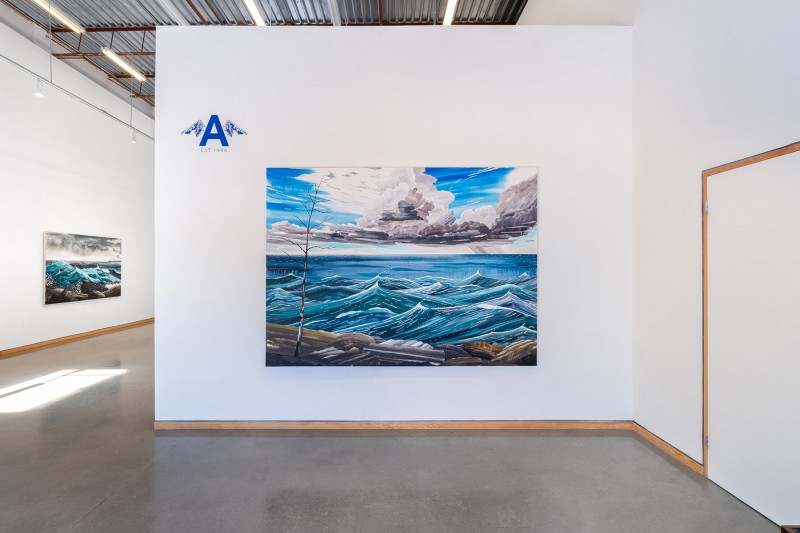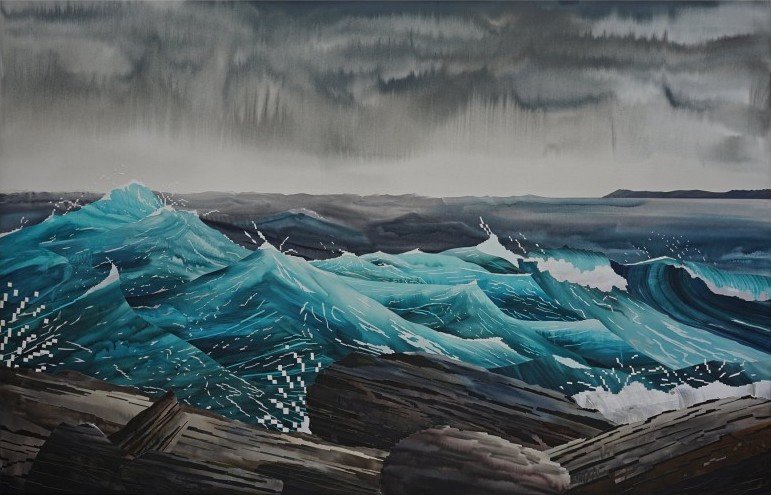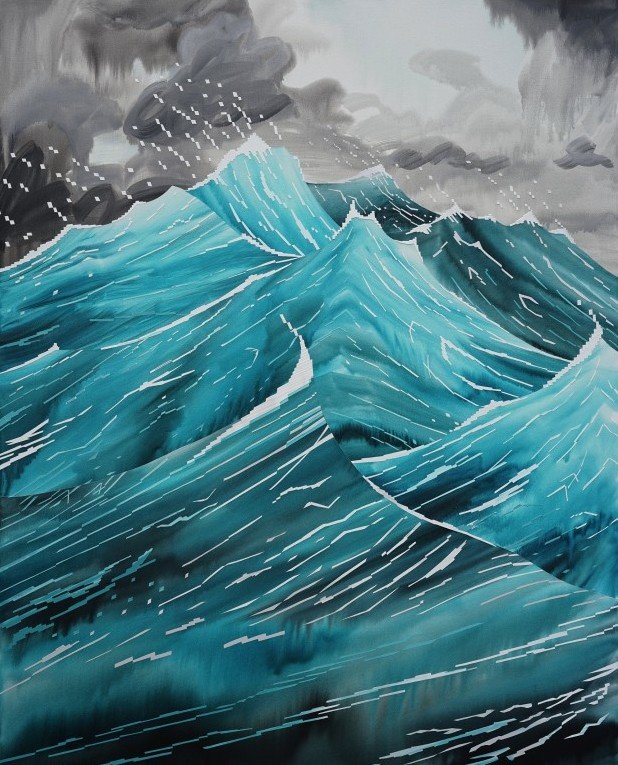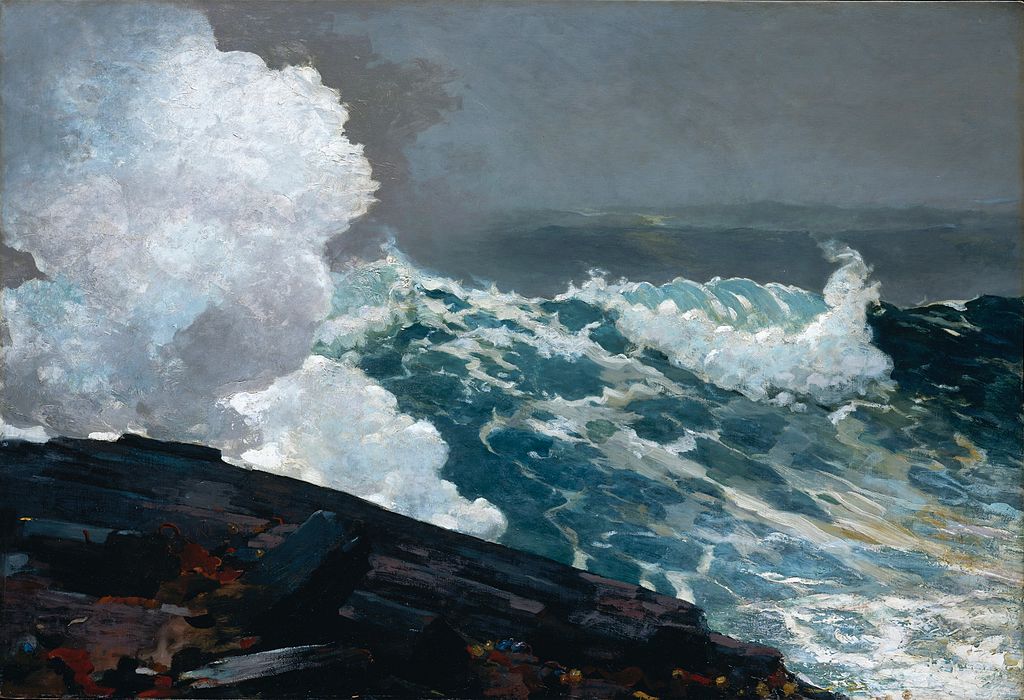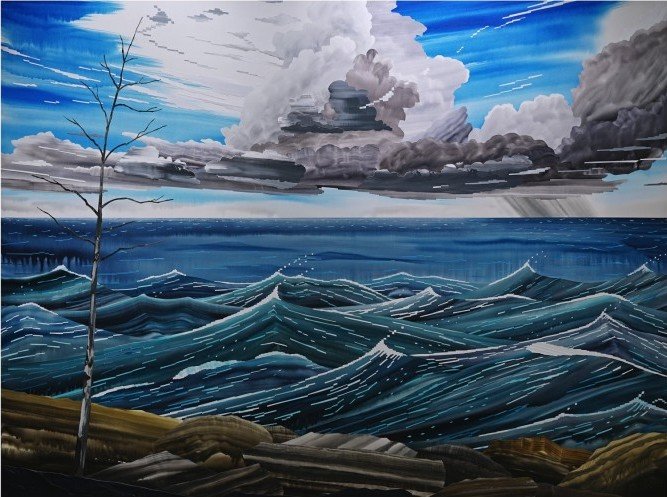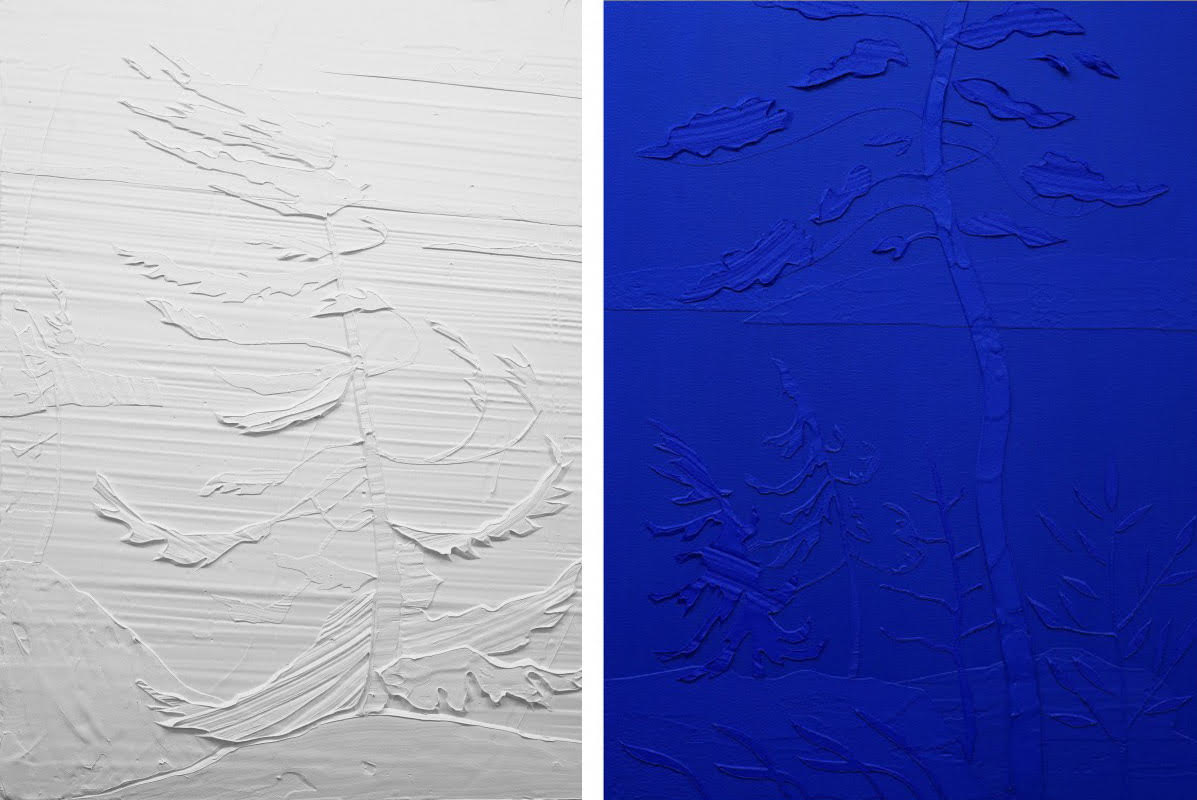Installation view of Gavin Lynch, Breaker. Photo: Alex Fisher
Gavin Lynch’s latest exhibition Breaker at Angell Gallery is an exploration of waterscapes, creating the illusion of power and movement in painting. Lynch’s signature style is emulating the appearance of collage pieces through his advanced painting technique. From far away the paintings resemble realism but up close the fragmentation, crisp edges, gradient colours and paint washes begin to resemble assemblage, a low-poly digital image or pixelated photos.
Gavin Lynch, Tempest (for Winslow), 2019, acrylic on canvas, 55″ x 86″
In Breaker we see Lynch beginning to depart from his previous subject of the forest in favour of the sea. The title is derived from the dual meaning of the word; both a wave with a white foam and someone who breaks something, like rules or conventions. Does this duality suggest an aesthetic deconstruction of the traditional landscape or a commentary on how we are destroying the natural environment?
Gavin Lynch, Breaker, 2019, acrylic on canvas, 60″ x 48″
This new body of work was inspired by Lynch’s research into artists who have worked with land and seascapes such as Winslow Homer, Katsushi Hokusai and the Group of Seven. Other searches included more naive or commercial photographers, such as stock photos and people’s personal online archives. Lynch’s work seems to have brought these historic paintings into the contemporary with his gaze and style, and by combining elements of canonical and conventional art.
Winslow Homer, Northeaster, 1895. Metropolitan Museum of Art online Gallery
Gavin Lynch, Approaching Storm, Lake Superior, 2019, acrylic on canvas, 71″ x 95″
In addition to a change of subject matter, Lynch has also branched into creating white and blue monochrome paintings. Two pieces, titled The Storm of 1921, a white painting and The Other Storm of 1921, a blue artwork, likely refer to the massive solar storm that occurred in May 1921, known as the Carrington Event. The monochromatic palette may have been influenced by the geomagnetic storm while Lynch represents the different forms of radiation as white x-rays or ultraviolet lights. It may as well be a simply artistic interpretation of the phenomenon. The works themselves are beautiful and textured renditions of trees, with thick layers of acrylic. The other two monochromes, Blue Moon and White Pine, take their titles from nature and the paintings just follow their respective colours.
Gavin Lynch, The Storm of 1921, 2019, acrylic on panel, 24″ x 18″ (left) and The Other Storm of 1921, 2019, acrylic and sand on canvas over panel, 24″ x 18″ (right)
The exhibition is a fascinating take on an age-old subject matter with a fresh, present-day perspective. The vibrant colours, unique style and familiar scenes make the show accessible for all audiences without sacrificing conceptual and historical significance.
Nathan Flint
Images are courtesy of Angell Gallery
*Exhibition information: June 8 – July 20, 2019, Angell Gallery, 1444 Dupont St., Unit 15, Toronto. Gallery hours: Wed – Sat, 12 – 5 pm.

